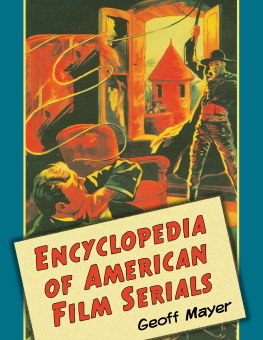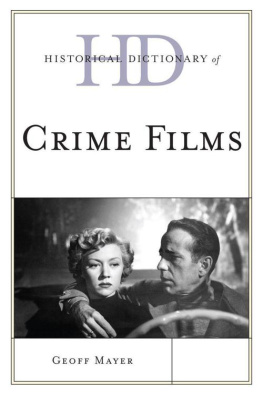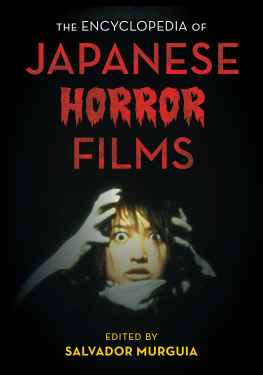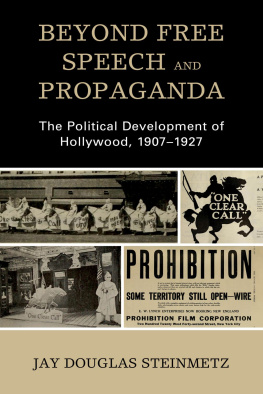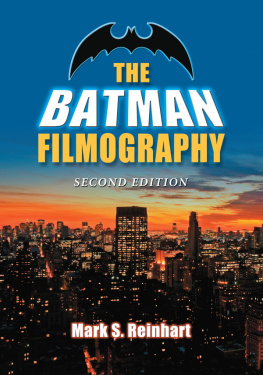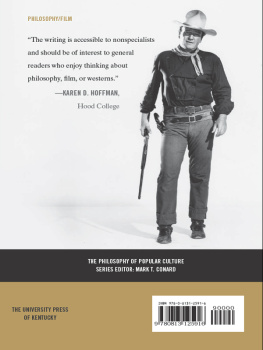
Encyclopedia of American Film Serials
GEOFF MAYER

McFarland & Company, Inc., Publishers
Jefferson, North Carolina
LIBRARY OF CONGRESS CATALOGUING DATA ARE AVAILABLE
BRITISH LIBRARY CATALOGUING DATA ARE AVAILABLE
e-ISBN: 978-1-4766-2719-9
2017 Geoff Mayer. All rights reserved
No part of this book may be reproduced or transmitted in any form or by any means, electronic or mechanical, including photocopying or recording, or by any information storage and retrieval system, without permission in writing from the publisher.
Front cover: detail from movie poster artwork showing Robert Livingston as The Eagle in Republics The Vigilantes Are Coming, 1936
McFarland & Company, Inc., Publishers
Box 611, Jefferson, North Carolina 28640
www.mcfarlandpub.com
Acknowledgments
I wish to thank my wife Lesley and my daughter Rebecca for proofreading the manuscript and trying to simplify my convoluted prose. Mistakes that slipped through this net are all mine. I would also like to thank my friend Barbara Bahl, longtime Lone Pine resident and Lone Pine Film Festival organizer, for her kind hospitality every time I visit the Alabama Hills. Similarly, author, Lone Pine resident and festival contributor Christopher Langley for his valuable assistance, especially showing me where Veda Ann Borg crawled through a crevice in the Alabama Hills in Jungle Raiders (1945). Also Dean Brandum, who, many years ago, loaned me his VHS collection of remastered Republic serials. I have never returned these tapes. Finally, Dr. Tony Jarvis, my daughters Lisa and Kylie and Ross Schnioffsky (from the La Trobe University Library) for their support.
Preface
On the opening night of the 2009 Lone Pine Film Festival in the magnificent Museum of Western Film History, I was giving a presentation on serials filmed in the Alabama Hills near Lone Pine. Early in the talk I screened a brief excerpt from chapter 12 of The Lone Ranger showing the Lone Ranger commandeering a coach, with the heroine and her father inside. This is a relatively simple action sequence, beautifully filmed with the Republic camera car racing alongside the coach on Movie Road with the villains in hot pursuit. The emotional power of this sequence emanates not just from the exciting images but also from the way in which they are expertly edited to match the tempo of Alberto Colombos arrangement of Gioacchino Rossinis Overture to the Fourth Act of William Tell, the Lone Ranger theme. Filmed against the spectacular background of the Sierra Nevada Mountains, with the rocky outcrops of the Alabama Hills in the foreground, the effect of this excerpt on the audience was immediate, visceral, even primal. It required no dialogue. It was pure melodrama.
Melodrama is a mode designed to elicit an emotional response with its clear expressive signs. Uncertainty is eliminated, we know who is good and who is bad. The villains chasing the coach are dressed in black while the Lone Ranger is costumed in a lightly colored shirt, white Stetson, dark trousers and wearing a leather mask with mesh covering the lower half of his face. These images immediately capture the morally polarized world of melodrama. The villains intend to violate innocence (the young woman and her father), the Lone Ranger intends to protect them. Within this simple setup, Rossinis music heightens the emotional impact.
My academic interest in melodrama as an expressionistic aesthetic and as a valuable mode for historians seeking to understand the complex nexus between film and culture, has moved through various imaginative forms: the crime film, the ways in which the Australian cinema responded to the Hollywood classical narrative system and the films of British director Roy Ward Baker and his realist masterpiece, A Night to Remember (1958), the definitive recreation of the sinking of the Titanic. And film noir, Hollywoods reformulation of American innocence.
My fascination with melodrama goes back nearly 40 years when I was a doctoral student struggling to formulate a thesis involving the narrative discourse of American combat films produced during the Second World War. Nothing, even theories of genre, seemed to help until I read a journal article by a Yale professor of French and Comparative Literature, Peter Brooks. The article was titled The Melodramatic Imagination. Brooks, who did not mention film in his article, argued that melodrama was the dramatic mode that dominated modern consciousness. It was this function, beginning in the closing years of the French Revolution, that interested me. It encouraged me to read 18th and 19th century theatrical melodramas, beginning with Les Victimes cloitress (1791). In terms of my thesis Dion Boucicaults play Jessie Brown or The Relief of Lucknow, first produced at Wallacks Theatre in New York on February 22, 1858, was invaluable and demonstrated that war plays and war films, produced 80 years apart, shared many of the same melodramatic devices and discourses.
Brooks subsequently developed and enlarged his ideas on the function, form and cultural significance of melodrama in his book The Melodramatic Imagination: Balzac, Henry James, Melodrama and the Mode of Excess. published his study of film melodrama. Elsaesser shared Brooks view that even if theatrical and film melodramas defied all semblance of verisimilitude and appeared alien to anything resembling daily life, they possessed a truth and life of their own. Melodrama, in other words, had the capacity to expose meaning existing beneath, or beyond, the surface realities of everyday life.
From my point of view Brooks and Elsaesser legitimized an academic interest in melodrama, a much-despised mode. It is one thing to study film noir, or even Sirks domestic melodramas, as they have acquired a patina of academic respectability over the years. But simple sensational melodramas, such as the film serial, are another matter, a reaction shared as far back as 1916 by George Seitz, one of its silent cinemas greatest practitioners, when he described the serial as the black sheep of the picture family and the reviled of critics. Well this book is, unashamedly, a comprehensive study of the black sheep of the film industry.
There is no more representative form of sensational melodrama than the film serial. It is the extreme manifestation an externalized drama, a key attribute of any form of melodrama. Everything happens on the outside. There is little, if any, character development, psychological anguish or internal division between conflicting impulses. The threat is always externalizedfrom villains of various forms. There is little or no introspection or debate. Only physical action and violence located in railway yards, lumber camps, timber mills, the jungle, warehouses, dark streets, Mars, the ocean, rooftops, South Seas islands, underwater cities, underground cities and the west.
The film serial is not a genre. It is a coherent aesthetic system that embraces many sub-genres, categories and types of stories: this includes the western, various types of crime film including the police procedural, the FBI agent, the insurance agent, the vigilante caught between police and the criminals, reporters, flying superheroes, masked superheroes, caped avengers, sportsmen, circus performers, mystery villains, firefighters, propaganda stories, invisible villains, soldiers, marines, aviators, pirates, spies, aliens and spaceman, Royal Canadian Mounties, desert adventures, jungle princesses, jungle adventures, even boy scouts.
Next page
